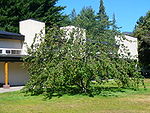 Sir Isaac Newton PRS MP
Sir Isaac Newton PRS MP (25 December 1642 – 20 March 1726) was an English
physicist,
mathematician,
astronomer,
natural philosopher,
alchemist and
theologian who has been considered by many to be the greatest and most influential scientist who ever lived.
[8][9] His monograph
Philosophiæ Naturalis Principia Mathematica, published in 1687, laid the foundations for most of
classical mechanics. In this work, Newton described
universal gravitation and
the three laws of motion,
which dominated the scientific view of the physical universe for the
next three centuries. Newton showed that the motion of objects on Earth
and that of
celestial bodies is governed by the same set of natural laws: by demonstrating the consistency between
Kepler's laws of planetary motion and his theory of gravitation he removed the last doubts about
heliocentrism and advanced the
scientific revolution. The
Principia
is generally considered to be one of the most important scientific
books ever written, both due to the specific physical laws the work
successfully described, and for its style, which assisted in setting
standards for scientific publication down to the present time.
Newton built the first practical
reflecting telescope[10] and developed a theory of colour based on the observation that a
prism decomposes white light into the many colours that form the
visible spectrum. He also formulated
an empirical law of cooling and studied the
speed of sound. In mathematics, Newton
shares the credit with
Gottfried Leibniz for
the development of
differential and integral calculus. He generalised the
binomial theorem to non-integer exponents, developed
Newton's method for approximating the
roots of a function, and contributed to the study of
power series.
Although an
unorthodox Christian, Newton was deeply religious and
his occult studies took up a substantial part of his life. He secretly rejected
Trinitarianism and refused
holy orders.
[11] As
Master of the Mint he effectively placed Britain on its first
Gold Standard.
Life
Early life
Isaac Newton was born (according to the
Julian calendar in use in England at the time) on Christmas Day, 25 December 1642, (
NS 4 January 1643.
[1]) at
Woolsthorpe Manor in
Woolsthorpe-by-Colsterworth, a
hamlet in the county of
Lincolnshire. He was born three months after the death of his father, a prosperous farmer also named Isaac Newton. Born
prematurely, he was a small child; his mother
Hannah Ayscough reportedly said that he could have fit inside a
quart
mug (≈ 1.1 litres). When Newton was three, his mother remarried and
went to live with her new husband, the Reverend Barnabus Smith, leaving
her son in the care of his maternal grandmother, Margery Ayscough. The
young Isaac disliked his stepfather and maintained some enmity towards
his mother for marrying him, as revealed by this entry in a list of sins
committed up to the age of 19: "Threatening my father and mother Smith
to burn them and the house over them."
[12] Although it was claimed that he was once engaged,
[13] Newton never married.
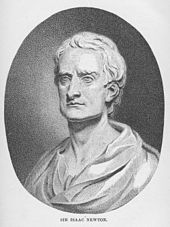
Isaac Newton (
Bolton, Sarah K. Famous Men of Science. NY: Thomas Y. Crowell & Co., 1889)
From the age of about twelve until he was seventeen, Newton was educated at
The King's School, Grantham. He was removed from school, and by October 1659, he was to be found at
Woolsthorpe-by-Colsterworth, where his mother, widowed by now for a second time, attempted to make a farmer of him. He hated farming.
[14]
Henry Stokes, master at the King's School, persuaded his mother to send
him back to school so that he might complete his education. Motivated
partly by a desire for revenge against a schoolyard bully, he became the
top-ranked student.
[15] The Cambridge psychologist
Simon Baron-Cohen considers it "fairly certain" that Newton had
Asperger syndrome.
[16]
In June 1661, he was admitted to
Trinity College, Cambridge as a
sizar – a sort of work-study role.
[17] At that time, the college's teachings were based on those of
Aristotle, whom Newton supplemented with modern philosophers, such as
Descartes, and
astronomers such as
Copernicus,
Galileo, and
Kepler. In 1665, he discovered the generalised
binomial theorem and began to develop a mathematical theory that later became
infinitesimal calculus. Soon after Newton had obtained his degree in August 1665, the university temporarily closed as a precaution against the
Great Plague. Although he had been undistinguished as a Cambridge student,
[18]
Newton's private studies at his home in Woolsthorpe over the subsequent
two years saw the development of his theories on calculus,
[19] optics and the
law of gravitation. In 1667, he returned to Cambridge as a fellow of Trinity.
[20]
Fellows were required to become ordained priests, something Newton
desired to avoid due to his unorthodox views. Luckily for Newton, there
was no specific deadline for ordination, and it could be postponed
indefinitely. The problem became more severe later when Newton was
elected for the prestigious
Lucasian Chair.
For such a significant appointment, ordaining normally could not be
dodged. Nevertheless, Newton managed to avoid it by means of a special
permission from
Charles II (see "Middle years" section below).
Middle years
Mathematics
Newton's work has been said "to distinctly advance every branch of mathematics then studied".
[21]
His work on the subject usually referred to as fluxions or calculus,
seen in a manuscript of October 1666, is now published among Newton's
mathematical papers.
[22] The author of the manuscript
De analysi per aequationes numero terminorum infinitas, sent by
Isaac Barrow to
John Collins in June 1669, was identified by Barrow in a letter sent to Collins in August of that year as:
[23]
Mr Newton, a fellow of our College, and very young ... but of an extraordinary genius and proficiency in these things.
Newton later became involved in a dispute with
Leibniz over priority in the development of infinitesimal calculus (the
Leibniz–Newton calculus controversy). Most modern historians believe that Newton and Leibniz developed
infinitesimal calculus
independently, although with very different notations. Occasionally it
has been suggested that Newton published almost nothing about it until
1693, and did not give a full account until 1704, while Leibniz began
publishing a full account of his methods in 1684. (Leibniz's notation
and "differential Method", nowadays recognised as much more convenient
notations, were adopted by continental European mathematicians, and
after 1820 or so, also by British mathematicians.) Such a suggestion,
however, fails to notice the content of calculus which critics of
Newton's time and modern times have pointed out in
Book 1 of Newton's
Principia itself (published 1687) and in its forerunner manuscripts, such as
De motu corporum in gyrum ("On the motion of bodies in orbit"), of 1684. The
Principia
is not written in the language of calculus either as we know it or as
Newton's (later) 'dot' notation would write it. But his work extensively
uses an infinitesimal calculus in geometric form, based on limiting
values of the ratios of vanishing small quantities: in the
Principia itself Newton gave demonstration of this under the name of 'the method of first and last ratios'
[24] and explained why he put his expositions in this form,
[25] remarking also that 'hereby the same thing is performed as by the method of indivisibles'.
Because of this, the
Principia has been called "a book dense with the theory and application of the infinitesimal calculus" in modern times
[26] and "lequel est presque tout de ce calcul" ('nearly all of it is of this calculus') in Newton's time.
[27] His use of methods involving "one or more orders of the infinitesimally small" is present in his
De motu corporum in gyrum of 1684
[28] and in his papers on motion "during the two decades preceding 1684".
[29]
Newton had been reluctant to publish his calculus because he feared controversy and criticism.
[30] He was close to the Swiss mathematician
Nicolas Fatio de Duillier. In 1691, Duillier started to write a new version of Newton's
Principia, and corresponded with Leibniz.
[31] In 1693 the relationship between Duillier and Newton deteriorated, and the book was never completed.
Starting in 1699, other members of the
Royal Society (of which Newton was a member) accused Leibniz of
plagiarism,
and the dispute broke out in full force in 1711. The Royal Society
proclaimed in a study that it was Newton who was the true discoverer and
labelled Leibniz a fraud. This study was cast into doubt when it was
later found that Newton himself wrote the study's concluding remarks on
Leibniz. Thus began the bitter controversy which marred the lives of
both Newton and Leibniz until the latter's death in 1716.
[32]
Newton is generally credited with the
generalised binomial theorem, valid for any exponent. He discovered
Newton's identities,
Newton's method, classified cubic plane curves (
polynomials of degree three in two
variables), made substantial contributions to the theory of
finite differences, and was the first to use fractional indices and to employ
coordinate geometry to derive solutions to
Diophantine equations. He approximated partial sums of the
harmonic series by
logarithms (a precursor to
Euler's summation formula), and was the first to use
power series with confidence and to revert power series. Newton's work on infinite series was inspired by
Simon Stevin's decimals.
[33]
He was appointed
Lucasian Professor of Mathematics in 1669 on Barrow's recommendation. In that day, any fellow of Cambridge or Oxford was required to become an ordained
Anglican priest. However, the terms of the Lucasian professorship required that the holder
not
be active in the church (presumably so as to have more time for
science). Newton argued that this should exempt him from the ordination
requirement, and
Charles II,
whose permission was needed, accepted this argument. Thus a conflict
between Newton's religious views and Anglican orthodoxy was averted.
[34]
Optics
From 1670 to 1672, Newton lectured on optics.
[36] During this period he investigated the
refraction of light, demonstrating that a
prism could decompose
white light into a
spectrum of colours, and that a
lens and a second prism could recompose the multicoloured spectrum into white light.
[37] Modern scholarship has revealed that Newton's analysis and resynthesis of white light owes a debt to
corpuscular alchemy.
[38]
He also showed that the coloured light does not change its properties
by separating out a coloured beam and shining it on various objects.
Newton noted that regardless of whether it was reflected or scattered or
transmitted, it stayed the same colour. Thus, he observed that colour
is the result of objects interacting with already-coloured light rather
than objects generating the colour themselves. This is known as
Newton's theory of colour.
[39]

Illustration of a
dispersive prism decomposing white light into the colours of the spectrum, as discovered by Newton
From this work, he concluded that the lens of any
refracting telescope would suffer from the
dispersion of light into colours (
chromatic aberration). As a proof of the concept, he constructed a telescope using a mirror as the
objective to bypass that problem.
[40] Building the design, the first known functional reflecting telescope, today known as a
Newtonian telescope,
[40]
involved solving the problem of a suitable mirror material and shaping
technique. Newton ground his own mirrors out of a custom composition of
highly reflective
speculum metal, using
Newton's rings to judge the
quality of the optics for his telescopes. In late 1668
[41] he was able to produce this first
reflecting telescope. In 1671, the Royal Society asked for a demonstration of his reflecting telescope.
[42] Their interest encouraged him to publish his notes
On Colour, which he later expanded into his
Opticks. When
Robert Hooke
criticised some of Newton's ideas, Newton was so offended that he
withdrew from public debate. Newton and Hooke had brief exchanges in
1679–80, when Hooke, appointed to manage the Royal Society's
correspondence, opened up a correspondence intended to elicit
contributions from Newton to Royal Society transactions,
[43]
which had the effect of stimulating Newton to work out a proof that the
elliptical form of planetary orbits would result from a centripetal
force inversely proportional to the square of the radius vector (see
Newton's law of universal gravitation – History and
De motu corporum in gyrum). But the two men remained generally on poor terms until Hooke's death.
[44]

Facsimile of a 1682 letter from Isaac Newton to Dr William Briggs, commenting on Briggs' "A New Theory of Vision".
Newton argued that light is composed of particles or corpuscles,
which were refracted by accelerating into a denser medium. He verged on
soundlike waves to explain the repeated pattern of reflection and
transmission by thin films (Opticks Bk.II, Props. 12), but still
retained his theory of 'fits' that disposed corpuscles to be reflected
or transmitted (Props.13). Later physicists instead favoured a purely
wavelike explanation of light to account for the
interference patterns, and the general phenomenon of
diffraction. Today's
quantum mechanics,
photons and the idea of
wave–particle duality bear only a minor resemblance to Newton's understanding of light.
In his
Hypothesis of Light of 1675, Newton
posited the existence of the
ether to transmit forces between particles. The contact with the
theosophist Henry More, revived his interest in alchemy. He replaced the ether with occult forces based on
Hermetic ideas of attraction and repulsion between particles.
John Maynard Keynes,
who acquired many of Newton's writings on alchemy, stated that "Newton
was not the first of the age of reason: He was the last of the
magicians."
[45] Newton's interest in alchemy cannot be isolated from his contributions to science.
[5] This was at a time when there was no clear distinction between alchemy and science. Had he not relied on the
occult idea of
action at a distance, across a vacuum, he might not have developed his theory of gravity. (See also
Isaac Newton's occult studies.)
In 1704, Newton published
Opticks,
in which he expounded his corpuscular theory of light. He considered
light to be made up of extremely subtle corpuscles, that ordinary matter
was made of grosser corpuscles and speculated that through a kind of
alchemical transmutation "Are not gross Bodies and Light convertible
into one another, ...and may not Bodies receive much of their Activity
from the Particles of Light which enter their Composition?"
[46] Newton also constructed a primitive form of a frictional
electrostatic generator, using a glass globe (Optics, 8th Query).
In an article entitled "Newton, prisms, and the 'opticks' of tunable lasers
[47] it is indicated that Newton in his book
Opticks
was the first to show a diagram using a prism as a beam expander. In
the same book he describes, via diagrams, the use of multiple-prism
arrays. Some 278 years after Newton's discussion,
multiple-prism beam expanders became central to the development of
narrow-linewidth tunable lasers. Also, the use of these prismatic beam expanders led to the
multiple-prism dispersion theory.
[47]
Mechanics and gravitation

Newton's own copy of his
Principia, with hand-written corrections for the second edition
In 1679, Newton returned to his work on (
celestial) mechanics, i.e., gravitation and its effect on the orbits of
planets, with reference to
Kepler's laws
of planetary motion. This followed stimulation by a brief exchange of
letters in 1679–80 with Hooke, who had been appointed to manage the
Royal Society's correspondence, and who opened a correspondence intended
to elicit contributions from Newton to Royal Society transactions.
[43]
Newton's reawakening interest in astronomical matters received further
stimulus by the appearance of a comet in the winter of 1680–1681, on
which he corresponded with
John Flamsteed.
[48]
After the exchanges with Hooke, Newton worked out a proof that the
elliptical form of planetary orbits would result from a centripetal
force inversely proportional to the square of the radius vector (see
Newton's law of universal gravitation – History and De motu corporum in gyrum). Newton communicated his results to
Edmond Halley and to the Royal Society in
De motu corporum in gyrum, a tract written on about 9 sheets which was copied into the Royal Society's Register Book in December 1684.
[49] This tract contained the nucleus that Newton developed and expanded to form the
Principia.
The
Principia was published on 5 July 1687 with encouragement and financial help from
Edmond Halley. In this work, Newton stated the
three universal laws of motion that enabled many of the advances of the
Industrial Revolution
which soon followed and were not to be improved upon for more than 200
years, and are still the underpinnings of the non-relativistic
technologies of the modern world. He used the Latin word
gravitas (weight) for the effect that would become known as
gravity, and defined the law of
universal gravitation.
In the same work, Newton presented a calculus-like method of
geometrical analysis by 'first and last ratios', gave the first
analytical determination (based on
Boyle's law)
of the speed of sound in air, inferred the oblateness of the spheroidal
figure of the Earth, accounted for the precession of the equinoxes as a
result of the Moon's gravitational attraction on the Earth's
oblateness, initiated the gravitational study of the
irregularities in the motion of the moon, provided a theory for the determination of the orbits of comets, and much more.
Newton made clear his
heliocentric
view of the solar system – developed in a somewhat modern way, because
already in the mid-1680s he recognised the "deviation of the Sun" from
the centre of gravity of the solar system.
[50]
For Newton, it was not precisely the centre of the Sun or any other
body that could be considered at rest, but rather "the common centre of
gravity of the Earth, the Sun and all the Planets is to be esteem'd the
Centre of the World", and this centre of gravity "either is at rest or
moves uniformly forward in a right line" (Newton adopted the "at rest"
alternative in view of common consent that the centre, wherever it was,
was at rest).
[51]
Newton's postulate of an invisible
force able to act over vast distances led to him being criticised for introducing "
occult agencies" into science.
[52] Later, in the second edition of the
Principia (1713), Newton firmly rejected such criticisms in a concluding
General Scholium,
writing that it was enough that the phenomena implied a gravitational
attraction, as they did; but they did not so far indicate its cause, and
it was both unnecessary and improper to frame hypotheses of things that
were not implied by the phenomena. (Here Newton used what became his
famous expression
"hypotheses non fingo"[53]).
With the
Principia, Newton became internationally recognised.
[54] He acquired a circle of admirers, including the
Swiss-born mathematician
Nicolas Fatio de Duillier, with whom he formed an intense relationship. This abruptly ended in 1693, and at the same time Newton suffered a
nervous breakdown.
[55]
Classification of cubics
Besides the work of Newton and others on calculus, the first
important demonstration of the power of analytic geometry was Newton's
classification of cubic curves in the Euclidean plane in the late 1600s.
He divided them into four types, satisfying different equations, and in
1717
Stirling,
probably with Newton's help, proved that every cubic was one of these
four. Newton also claimed that the four types could be obtained by plane
projection from one of them, and this was proved in 1731.
[56]
Later life
In the 1690s, Newton wrote a number of
religious tracts dealing with the literal interpretation of the Bible.
Henry More's belief in the Universe and rejection of
Cartesian dualism may have influenced Newton's religious ideas. A manuscript he sent to
John Locke in which he disputed the existence of the
Trinity.
[57] It was published in 1785.
[58] Later works –
The Chronology of Ancient Kingdoms Amended (1728) and
Observations Upon the Prophecies of Daniel and the Apocalypse of St. John (1733) – were published after his death. He also devoted a great deal of time to
alchemy (see above).
Newton was also a member of the
Parliament of England
from 1689 to 1690 and in 1701, but according to some accounts his only
comments were to complain about a cold draught in the chamber and
request that the window be closed.
[59]
Newton moved to London to take up the post of warden of the
Royal Mint in 1696, a position that he had obtained through the patronage of
Charles Montagu, 1st Earl of Halifax, then
Chancellor of the Exchequer.
He took charge of England's great recoining, somewhat treading on the
toes of Lord Lucas, Governor of the Tower (and securing the job of
deputy
comptroller of the temporary Chester branch for Edmond Halley). Newton became perhaps the best-known
Master of the Mint upon the death of
Thomas Neale in 1699, a position Newton held for the last 30 years of his life.
[60][61] These appointments were intended as
sinecures,
but Newton took them seriously, retiring from his Cambridge duties in
1701, and exercising his power to reform the currency and punish
clippers and counterfeiters. As Master of the Mint in 1717 in the "
Law of Queen Anne" Newton moved the
Pound Sterling de facto from the
silver standard to the
gold standard
by setting the bimetallic relationship between gold coins and the
silver penny in favour of gold. This caused silver sterling coin to be
melted and shipped out of Britain. Newton was made President of the
Royal Society in 1703 and an associate of the French
Académie des Sciences. In his position at the Royal Society, Newton made an enemy of
John Flamsteed, the
Astronomer Royal, by prematurely publishing Flamsteed's
Historia Coelestis Britannica, which Newton had used in his studies.
[62]

Personal coat of arms of Sir Isaac Newton
[63]
In April 1705, Queen Anne
knighted
Newton during a royal visit to Trinity College, Cambridge. The
knighthood is likely to have been motivated by political considerations
connected with the
Parliamentary election in May 1705, rather than any recognition of Newton's scientific work or services as Master of the Mint.
[64] Newton was the second scientist to be knighted, after Sir
Francis Bacon.
Towards the end of his life, Newton took up residence at
Cranbury Park, near
Winchester with his niece and her husband, until his death in 1726.
[65] His half-niece,
Catherine Barton Conduitt,
[66] served as his hostess in social affairs at his house on
Jermyn Street in London; he was her "very loving Uncle,"
[67] according to his letter to her when she was recovering from
smallpox.
Newton died in his sleep in London on 20 March 1726 (
OS 20 March 1726;
NS 31 March 1727)
[1] and was buried in
Westminster Abbey. A bachelor, he had divested much of his estate to relatives during his last years, and died
intestate. After his death, Newton's hair was examined and found to contain
mercury, probably resulting from his alchemical pursuits.
Mercury poisoning could explain Newton's eccentricity in late life.
[68]
After death
Fame
The mathematician
Joseph-Louis Lagrange
often said that Newton was the greatest genius who ever lived, and once
added that Newton was also "the most fortunate, for we cannot find more
than once a system of the world to establish."
[69] English poet
Alexander Pope was moved by Newton's accomplishments to write the famous
epitaph:
Nature and nature's laws lay hid in night;
God said "Let Newton be" and all was light.
Newton himself had been rather more modest of his own achievements, famously writing in a letter to
Robert Hooke in February 1676:
If I have seen further it is by standing on the shoulders of giants.[70]
Two writers think that the above quote, written at a time when Newton
and Hooke were in dispute over optical discoveries, was an oblique
attack on Hooke (said to have been short and hunchbacked), rather than –
or in addition to – a statement of modesty.
[71][72] On the other hand, the widely known proverb about
standing on the shoulders of giants published among others by 17th-century poet
George Herbert (a former orator of the University of Cambridge and fellow of Trinity College) in his
Jacula Prudentum
(1651), had as its main point that "a dwarf on a giant's shoulders sees
farther of the two", and so its effect as an analogy would place Newton
himself rather than Hooke as the 'dwarf'.
In a later memoir, Newton wrote:
I do not know what I may appear to the world, but to myself I seem to
have been only like a boy playing on the sea-shore, and diverting
myself in now and then finding a smoother pebble or a prettier shell
than ordinary, whilst the great ocean of truth lay all undiscovered
before me.[73]
Albert Einstein kept a picture of Newton on his study wall alongside ones of
Michael Faraday and
James Clerk Maxwell.
[74] Newton remains influential to today's scientists, as demonstrated by a 2005 survey of members of Britain's
Royal Society
(formerly headed by Newton) asking who had the greater effect on the
history of science, Newton or Einstein. Royal Society scientists deemed
Newton to have made the greater overall contribution.
[75]
In 1999, an opinion poll of 100 of today's leading physicists voted
Einstein the "greatest physicist ever;" with Newton the runner-up, while
a parallel survey of rank-and-file physicists by the site PhysicsWeb
gave the top spot to Newton.
[76]
Commemorations
Newton's monument (1731) can be seen in
Westminster Abbey, at the north of the entrance to the choir against the choir screen, near his tomb. It was executed by the sculptor
Michael Rysbrack (1694–1770) in white and grey marble with design by the architect
William Kent.
The monument features a figure of Newton reclining on top of a
sarcophagus, his right elbow resting on several of his great books and
his left hand pointing to a scroll with a mathematical design. Above him
is a pyramid and a celestial globe showing the signs of the Zodiac and
the path of the comet of 1680. A relief panel depicts
putti using instruments such as a telescope and prism.
[77] The Latin inscription on the base translates as:
Here is buried Isaac Newton, Knight, who by a strength of mind almost
divine, and mathematical principles peculiarly his own, explored the
course and figures of the planets, the paths of comets, the tides of the
sea, the dissimilarities in rays of light, and, what no other scholar
has previously imagined, the properties of the colours thus produced.
Diligent, sagacious and faithful, in his expositions of nature,
antiquity and the holy Scriptures, he vindicated by his philosophy the
majesty of God mighty and good, and expressed the simplicity of the
Gospel in his manners. Mortals rejoice that there has existed such and
so great an ornament of the human race! He was born on 25 December 1642,
and died on 20 March 1726/7. — Translation from G.L. Smyth, The Monuments and Genii of St. Paul's Cathedral, and of Westminster Abbey (1826), ii, 703–4.[77]
From 1978 until 1988, an image of Newton designed by
Harry Ecclestone appeared on Series D £1
banknotes issued by the
Bank of England
(the last £1 notes to be issued by the Bank of England). Newton was
shown on the reverse of the notes holding a book and accompanied by a
telescope, a prism and a map of the
Solar System.
[78]

Eduardo Paolozzi's
Newton, after William Blake (1995), outside the British Library
A statue of Isaac Newton, looking at an apple at his feet, can be seen at the
Oxford University Museum of Natural History. A large bronze statue,
Newton, after William Blake, by
Eduardo Paolozzi, dated 1995 and inspired by
Blake's
etching, dominates the piazza of the
British Library in London.
In popular culture
Personal life
Newton never married, and no evidence has been uncovered that he had any romantic relationship.
[citation needed] Although it is impossible to verify, it is commonly believed that he died a
virgin, as has been commented on by such figures as mathematician
Charles Hutton,
[79] economist
John Maynard Keynes,
[80] and physicist
Carl Sagan.
[81]
French writer and philosopher
Voltaire,
who was in London at the time of Newton's funeral, claimed to have
verified the fact, writing that "I have had that confirmed by the doctor
and the surgeon who were with him when he died"
[82] (allegedly he stated on his deathbed that he was a virgin
[83][unreliable source?][84]). In 1733, Voltaire publicly stated that Newton "had neither passion nor weakness; he never went near any woman".
[85][86]
Newton did have a close friendship with the Swiss mathematician
Nicolas Fatio de Duillier, whom he met in London around 1690.
[87] Their friendship came to an unexplained end in 1693. Some of their correspondence has survived.
Religious views
In a minority view, T.C. Pfizenmaier argues that Newton held the
Eastern Orthodox view on the Trinity rather than the Western one held by
Roman Catholics,
Anglicans and most
Protestants.
[88] However, this type of view 'has lost support of late with the availability of Newton's theological papers',
[89] and now most scholars identify Newton as an
Antitrinitarian monotheist.
[6][90] 'In Newton's eyes, worshipping Christ as God was
idolatry, to him the fundamental sin'.
[91] Historian
Stephen D. Snobelen says of Newton, "Isaac Newton was a
heretic.
But ... he never made a public declaration of his private faith—which
the orthodox would have deemed extremely radical. He hid his faith so
well that scholars are still unravelling his personal beliefs."
[6] Snobelen concludes that Newton was at least a
Socinian sympathiser (he owned and had thoroughly read at least eight Socinian books), possibly an
Arian and almost certainly an
anti-trinitarian.
[6]
In an age notable for its religious intolerance, there are few public
expressions of Newton's radical views, most notably his refusal to
receive holy orders and his refusal, on his death bed, to receive the
sacrament when it was offered to him.
[6]
Although the laws of motion and universal gravitation became Newton's
best-known discoveries, he warned against using them to view the
Universe as a mere machine, as if akin to a great clock. He said,
"Gravity explains the motions of the planets, but it cannot explain who
set the planets in motion. God governs all things and knows all that is
or can be done."
[92]
Along with his scientific fame, Newton's studies of the Bible and of the early
Church Fathers were also noteworthy. Newton wrote works on
textual criticism, most notably
An Historical Account of Two Notable Corruptions of Scripture. He placed the crucifixion of
Jesus Christ at 3 April, AD 33, which agrees with one traditionally accepted date.
[93] He also tried unsuccessfully to find
hidden messages within the Bible.
Newton wrote more on religion than he did on natural science.
[citation needed] He believed in a rationally
immanent world, but he rejected the
hylozoism implicit in
Leibniz and
Baruch Spinoza.
The ordered and dynamically informed Universe could be understood, and
must be understood, by an active reason. In his correspondence, Newton
claimed that in writing the
Principia "I had an eye upon such Principles as might work with considering men for the belief of a Deity".
[94]
He saw evidence of design in the system of the world: "Such a wonderful
uniformity in the planetary system must be allowed the effect of
choice". But Newton insisted that divine intervention would eventually
be required to reform the system, due to the slow growth of
instabilities.
[95]
For this, Leibniz lampooned him: "God Almighty wants to wind up his
watch from time to time: otherwise it would cease to move. He had not,
it seems, sufficient foresight to make it a perpetual motion."
[96] Newton's position was vigorously defended by his follower
Samuel Clarke in a
famous correspondence. A century later,
Pierre-Simon Laplace's work "
Celestial Mechanics" had a natural explanation for why the planet orbits don't require periodic divine intervention.
[97]
Effect on religious thought
Newton and
Robert Boyle's mechanical philosophy was promoted by
rationalist pamphleteers as a viable alternative to the
pantheists and
enthusiasts, and was accepted hesitantly by orthodox preachers as well as dissident preachers like the
latitudinarians.
[98] The clarity and simplicity of science was seen as a way to combat the emotional and
metaphysical superlatives of both
superstitious enthusiasm and the threat of
atheism,
[99] and at the same time, the second wave of English
deists used Newton's discoveries to demonstrate the possibility of a "Natural Religion".
The attacks made against pre-
Enlightenment "magical thinking", and the
mystical elements of Christianity,
were given their foundation with Boyle's mechanical conception of the
Universe. Newton gave Boyle's ideas their completion through
mathematical proofs and, perhaps more importantly, was very successful in popularising them.
[100]
Newton refashioned the world governed by an interventionist God into a
world crafted by a God that designs along rational and universal
principles.
[101]
These principles were available for all people to discover, allowed
people to pursue their own aims fruitfully in this life, not
the next, and to perfect themselves with their own rational powers.
[102]
Newton saw God as the master creator whose existence could not be denied in the face of the grandeur of all creation.
[103][104][105] His spokesman, Clarke, rejected Leibniz'
theodicy which cleared God from the responsibility for
l'origine du mal
by making God removed from participation in his creation, since as
Clarke pointed out, such a deity would be a king in name only, and but
one step away from atheism.
[106] But the unforeseen
theological consequence of the success of Newton's system over the next century was to reinforce the
deist position advocated by Leibniz.
[107]
The understanding of the world was now brought down to the level of
simple human reason, and humans, as Odo Marquard argued, became
responsible for the correction and elimination of evil.
[108]
End of the world
In a manuscript he wrote in 1704 in which he describes his attempts to
extract scientific information from the Bible, he estimated that the
world would end no earlier than 2060. In predicting this he said, "This I
mention not to assert when the time of the end shall be, but to put a
stop to the rash conjectures of fanciful men who are frequently
predicting the time of the end, and by doing so bring the sacred
prophesies into discredit as often as their predictions fail."
Enlightenment philosophers
Enlightenment
philosophers chose a short history of scientific predecessors –
Galileo, Boyle, and Newton principally – as the guides and guarantors of
their applications of the singular concept of
Nature and
Natural Law
to every physical and social field of the day. In this respect, the
lessons of history and the social structures built upon it could be
discarded.
[110]
It was Newton's conception of the Universe based upon Natural and
rationally understandable laws that became one of the seeds for
Enlightenment ideology.
[111] Locke and
Voltaire applied concepts of Natural Law to political systems advocating intrinsic rights; the
physiocrats and
Adam Smith applied Natural conceptions of
psychology and self-interest to economic systems; and
sociologists criticised the current
social order for trying to fit history into Natural models of
progress.
Monboddo and
Samuel Clarke resisted elements of Newton's work, but eventually rationalised it to conform with their strong religious views of nature.
Royal Mint
As Warden, and afterwards Master, of the
Royal Mint, Newton estimated that 20 percent of the coins taken in during The
Great Recoinage of 1696 were
counterfeit. Counterfeiting was
high treason, punishable by the felon's being
hanged, drawn and quartered.
Despite this, convicting the most flagrant criminals could be extremely
difficult. However, Newton proved to be equal to the task.
[112] Disguised as a habitué of bars and taverns, he gathered much of that evidence himself.
[113] For all the barriers placed to prosecution, and separating the branches of government,
English law still had ancient and formidable customs of authority. Newton had himself made a
justice of the peace in all the home counties—there is a draft of a letter regarding this matter stuck into Newton's personal first edition of his
Philosophiæ Naturalis Principia Mathematica which he must have been amending at the time.
[114]
Then he conducted more than 100 cross-examinations of witnesses,
informers, and suspects between June 1698 and Christmas 1699. Newton
successfully prosecuted 28 coiners.
[115]
One of Newton's cases as the King's attorney was against
William Chaloner.
[116]
Chaloner's schemes included setting up phony conspiracies of Catholics
and then turning in the hapless conspirators whom he had entrapped.
Chaloner made himself rich enough to posture as a gentleman. Petitioning
Parliament, Chaloner accused the Mint of providing tools to
counterfeiters (a charge also made by others). He proposed that he be
allowed to inspect the Mint's processes in order to improve them. He
petitioned Parliament to adopt his plans for a coinage that could not be
counterfeited, while at the same time striking false coins.
[117]
Newton put Chaloner on trial for counterfeiting and had him sent to
Newgate Prison in September 1697. But Chaloner had friends in high
places, who helped him secure an acquittal and his release.
[116]
Newton put him on trial a second time with conclusive evidence.
Chaloner was convicted of high treason and hanged, drawn and quartered
on 23 March 1699 at
Tyburn gallows.
[118]
As a result of a report written by Newton on 21 September 1717 to the
Lords Commissioners of His Majesty's Treasury the bimetallic
relationship between gold coins and silver coins was changed by Royal
proclamation on 22 December 1717, forbidding the exchange of gold
guineas for more than 21 silver shillings.
[119][120]
This inadvertently resulted in a silver shortage as silver coins were
used to pay for imports, while exports were paid for in gold,
effectively moving Britain from the silver standard to its first gold
standard. It is a matter of debate as whether he intended to do this or
not.
[121] It has been argued that Newton conceived of his work at the Mint as a continuation of his alchemical work.
Laws of motion
In the
Principia, Newton gives the famous three laws of motion, stated here in modern form.
Newton's First Law (also known as the Law of
Inertia)
states that an object at rest tends to stay at rest and that an object
in uniform motion tends to stay in uniform motion unless acted upon by a
net external force. The meaning of this law is the existence of
reference frames (called inertial frames) where objects not acted upon
by forces move in uniform motion (in particular, they may be at rest).
Newton's Second Law states that an applied force,

, on an object equals the rate of change of its momentum,

, with time. Mathematically, this is expressed as

Since the law applies only to systems of constant mass,
[123] m can be brought out of the derivative operator. By substitution using the definition of
acceleration, the equation can be written in the iconic form

The first and second laws represent a break with the physics of
Aristotle,
in which it was believed that a force was necessary in order to
maintain motion. They state that a force is only needed in order to
change an object's state of motion. The SI unit of force is the
newton, named in Newton's honour.
Newton's Third Law states that for every action there is an
equal and opposite reaction. This means that any force exerted onto an
object has a counterpart force that is exerted in the opposite direction
back onto the first object. A common example is of two
ice skaters pushing against each other and sliding apart in opposite directions. Another example is the
recoil of a
firearm, in which the force propelling the
bullet
is exerted equally back onto the gun and is felt by the shooter. Since
the objects in question do not necessarily have the same mass, the
resulting acceleration of the two objects can be different (as in the
case of firearm recoil).
Unlike Aristotle's, Newton's physics is meant to be universal. For
example, the second law applies both to a planet and to a falling stone.
The
vector
nature of the second law addresses the geometrical relationship between
the direction of the force and the manner in which the object's
momentum changes. Before Newton, it had typically been assumed that a
planet orbiting the Sun would need a forward force to keep it moving.
Newton showed instead that all that was needed was an inward attraction
from the Sun. Even many decades after the publication of the
Principia, this counterintuitive idea was not universally accepted, and many scientists preferred
Descartes' theory of vortices.
Apple incident
Newton himself often told the story that he was inspired to formulate
his theory of gravitation by watching the fall of an apple from a tree.
[125]
Although it has been said that the apple story is a myth and that he
did not arrive at his theory of gravity in any single moment,
[126] acquaintances of Newton (such as
William Stukeley, whose manuscript account of 1752 has been made available by the Royal Society)
[127]
do in fact confirm the incident, though not the cartoon version that
the apple actually hit Newton's head. Stukeley recorded in his
Memoirs of Sir Isaac Newton's Life a conversation with Newton in Kensington on 15 April 1726:
[128]
... We went into the garden, & drank tea under the shade of some
appletrees, only he, & myself. amidst other discourse, he told me,
he was just in the same situation, as when formerly, the notion of
gravitation came into his mind. "why should that apple always descend
perpendicularly to the ground," thought he to him self: occasion'd by
the fall of an apple, as he sat in a comtemplative mood: "why should it
not go sideways, or upwards? but constantly to the earths centre?
assuredly, the reason is, that the earth draws it. there must be a
drawing power in matter. & the sum of the drawing power in the
matter of the earth must be in the earths centre, not in any side of the
earth. therefore dos this apple fall perpendicularly, or toward the
centre. if matter thus draws matter; it must be in proportion of its
quantity. therefore the apple draws the earth, as well as the earth
draws the apple."
John Conduitt, Newton's assistant at the Royal Mint and husband of
Newton's niece, also described the event when he wrote about Newton's
life:
[129]
In the year 1666 he retired again from Cambridge to his mother in
Lincolnshire. Whilst he was pensively meandering in a garden it came
into his thought that the power of gravity (which brought an apple from a
tree to the ground) was not limited to a certain distance from earth,
but that this power must extend much further than was usually thought.
Why not as high as the Moon said he to himself & if so, that must
influence her motion & perhaps retain her in her orbit, whereupon he
fell a calculating what would be the effect of that supposition.
In similar terms,
Voltaire wrote in his
Essay on Epic Poetry
(1727), "Sir Isaac Newton walking in his gardens, had the first thought
of his system of gravitation, upon seeing an apple falling from a
tree."
It is known from his notebooks that Newton was grappling in the late
1660s with the idea that terrestrial gravity extends, in an
inverse-square proportion, to the Moon; however it took him two decades
to develop the full-fledged theory.
[130]
The question was not whether gravity existed, but whether it extended
so far from Earth that it could also be the force holding the Moon to
its orbit. Newton showed that if the force decreased as the inverse
square of the distance, one could indeed calculate the Moon's orbital
period, and get good agreement. He guessed the same force was
responsible for other orbital motions, and hence named it "universal
gravitation".
Various trees are claimed to be "the" apple tree which Newton
describes. The King's School, Grantham, claims that the tree was
purchased by the school, uprooted and transported to the headmaster's
garden some years later. The staff of the [now]
National Trust-owned
Woolsthorpe Manor dispute this, and claim that a tree present in their
gardens is the one described by Newton. A descendant of the original
tree
[131]
can be seen growing outside the main gate of Trinity College,
Cambridge, below the room Newton lived in when he studied there. The
National Fruit Collection at Brogdale
[132] can supply grafts from their tree, which appears identical to
Flower of Kent, a coarse-fleshed cooking variety.
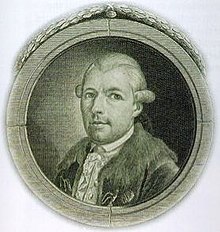 The Illuminati (plural of Latin illuminatus, "enlightened") is a name given to several groups, both real (historical) and fictitious. Historically the name refers to the Bavarian Illuminati, an Enlightenment-era secret society
founded on May 1, 1776. In more modern contexts the name refers to a
purported conspiratorial organization which is alleged to mastermind
events and control world affairs through governments and corporations to establish a New World Order. In this context the Illuminati are usually represented as a modern version or continuation of the Bavarian Illuminati.
The Illuminati (plural of Latin illuminatus, "enlightened") is a name given to several groups, both real (historical) and fictitious. Historically the name refers to the Bavarian Illuminati, an Enlightenment-era secret society
founded on May 1, 1776. In more modern contexts the name refers to a
purported conspiratorial organization which is alleged to mastermind
events and control world affairs through governments and corporations to establish a New World Order. In this context the Illuminati are usually represented as a modern version or continuation of the Bavarian Illuminati.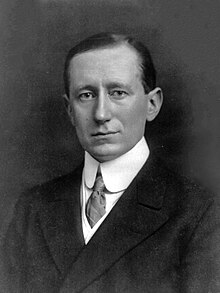
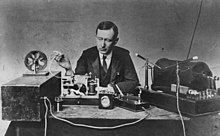

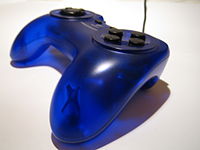

 Precision PC game controller USB speakers Wireless Trackman Mouse
Precision PC game controller USB speakers Wireless Trackman Mouse
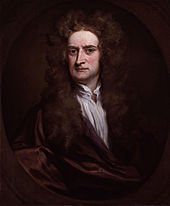

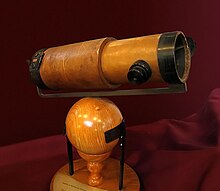



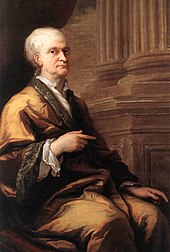

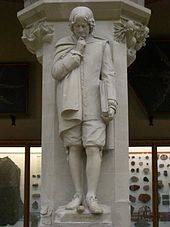

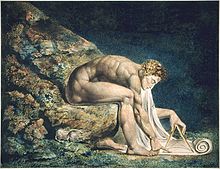
 , on an object equals the rate of change of its momentum,
, on an object equals the rate of change of its momentum,  , with time. Mathematically, this is expressed as
, with time. Mathematically, this is expressed as


